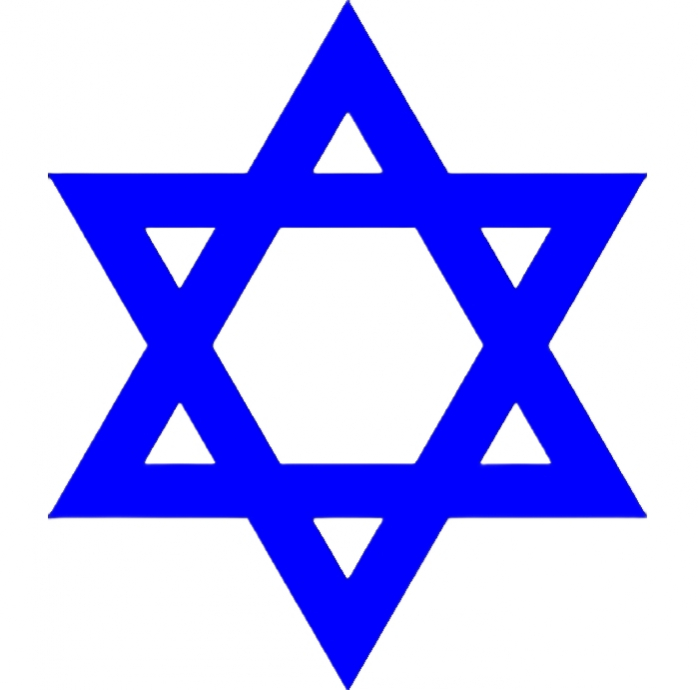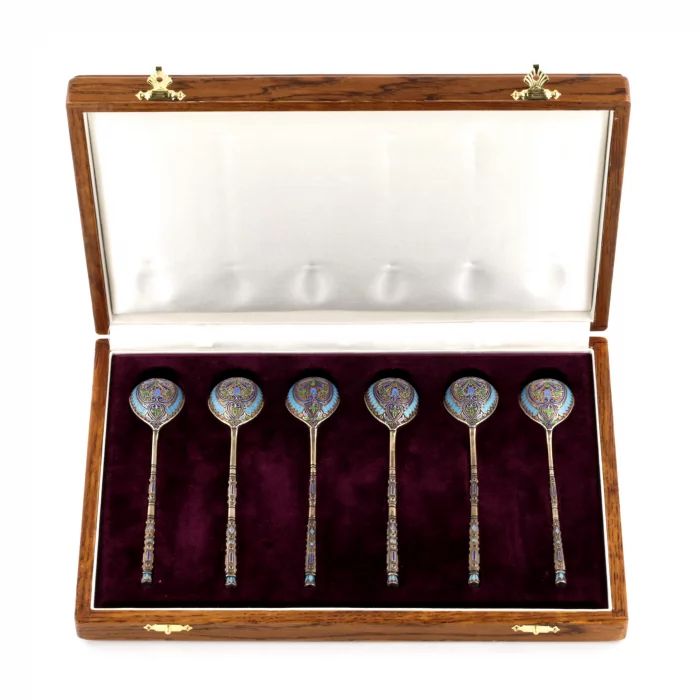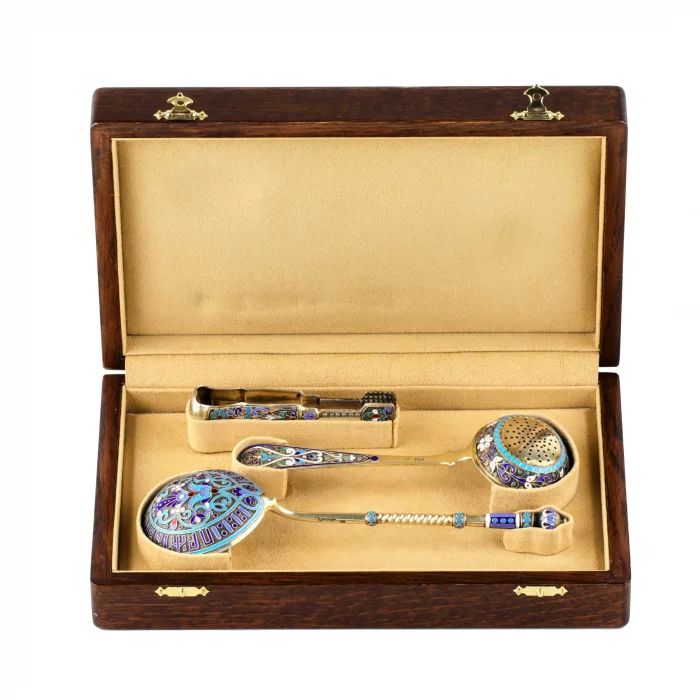
AntiqonART consultant will contact you within one business day after receiving your request.
Thank you for your request!
Our consultant will contact you soon.

AntiqonART consultant will contact you within one business day after receiving your request.






















Discover how the value of similar works has evolved over the past 10 years. Art is not only beauty — it's an investment.
Antiqon ART offers free packaging, insurance, and delivery for most items purchased through the company. Exceptions include large and oversized items that require specialized packing and shipping.
At Antiqon ART, we build trust and value your choice. Every purchase of art and antiques with us is an investment backed by our expertise, reputation, and a 100% authenticity guarantee.
Marks: masters mark DANNENBERG in an oval shield; assay mark of inspector L.Z. / 1874 (Ludwig Zak) in a square shield; mark of the Riga District Assay Office depicting fortress gates; multiple 84 standard marks.
Dimensions: height — 17 cm (with finial — 22 cm); unfolded length — 29 cm; folded — 13.5 × 3.5 cmWeight: 913 g
Expertise: expert opinion by Mikhail Itkin, specialist in Jewish decorative and applied art of the 17th–20th centuries, author of books Jewish Ritual Objects as Collectibles (2015), Secret Beauty. Old Jewish Silver from Private Collection (2021), Judaica: Symbolism of Jewish Ritual Object Decor (2022)
While the main centers for producing Judaica items in the Russian Empire were cities and towns on its eastern borders—such as Zhytomyr, Vilnius, Warsaw, Grodno—Riga in the 19th–20th centuries was not among them. Therefore, the creation of such a large and technically complex lamp by Riga master Eduard Dannenberg can be considered an exceptional event.Known for his jewelry ritual items for Lutheran churches in Livonia, master Dannenberg achieved the highest degree of jewelry craftsmanship in this piece of Jewish art, combining artistic expressiveness with a deep understanding of the symbolism of Judaica decor.
The lamp consists of three large silver plates combined into a three-leaf folding screen, decorated with numerous volumetric and engraved symbolic details and images. Creating such an item requires the master not only to possess the full range of jewelry techniques—from engraving and chasing to soldering and artistic mounting—but also spatial thinking and understanding of unfamiliar iconography.The chosen folding design likely indicates its intended use during travel coinciding with the Hanukkah holiday. Its decorative composition includes the architectural design of the Jerusalem Temple portal with King Solomons columns, an open Torah Scroll and its Crown, images of Prophet Moses with the Tablets of the Covenant, and High Priest Aaron with a breastplate and shofar. All this is executed in the traditional Baroque aesthetics of Eastern European Hanukkah lamps.It is likely that the item was created as a single piece. To date, no other Hanukkah lamps of Riga origin comparable in execution level, artistic elaboration, and preservation state are known. This allows us to consider this lamp as a unique monument of Jewish ritual tradition, possessing significant historical, cultural, and collectible value.
Comparable Hanukkah lamps are held in the worlds major collections—in the Israel Museum in Jerusalem, the Jewish Museum in New York, and the Jewish Museum in Berlin. However, the origin from Riga makes this Hanukkah lamp an exceptional phenomenon in the history of Judaica and in the heritage of the Baltic Jewish diaspora.




















